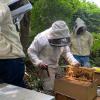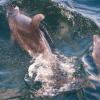Getting a piece of the pie: profits of environmental services for local actors Research Paper
Tropical forests in multi-functional landscapes Prince Bernhard Centre, Utrecht University Preface Over the last decades, tropical forest landscapes have experienced drastic changes. Forest conversion, fragmentation and exploitation have created new types of landscapes in many tropical forest areas throughout the World. These "multi-functional" landscapes consist of mosaics of undisturbed, exploited, degraded and secondary forests combined with agro-forests and non-forest areas under agriculture. Human pressure in these landscapes is typically high. In December 2002 and April 2003, the Prince Bernhard Centre of Utrecht University and the Dutch Association of Tropical Foresters organised two seminars in Utrecht to shed some light on the role of tropical forests in multi-functional landscapes. The two seminars included presentations on biodiversity conservation, carbon sequestration and hydrological functions of undisturbed and exploited tropical forests in the context of multi-functional landscapes (see Appendix for full list of presentations). Although we have not succeeded in including papers for all presentations held at the two seminars, we believe that the 7 papers included in these proceedings provide an overview of the most important issues related to the potential services of tropical forests in multi-functional landscapes. The proceedings include papers on the value of multi-functional landscapes for biodiversity conservation (Zuidema & Sayer; Wiersum), for hydrological functions (Van Dam) and for carbon sequestration (Karjalainen et al.; Trines). Furthermore, the economic valuation of forest services is discussed (Van Beukering) as well as the options to deliver payments for these services to local forest users (Verweij). We hope that these papers contribute to discussions on approaches to biodiversity conservation in tropical forests and on the potential of forest environmental services for their conservation. All papers are written in a non-technical style, thus making them also accessible to readers from outside the academic world.
Area of interest: Guyana




